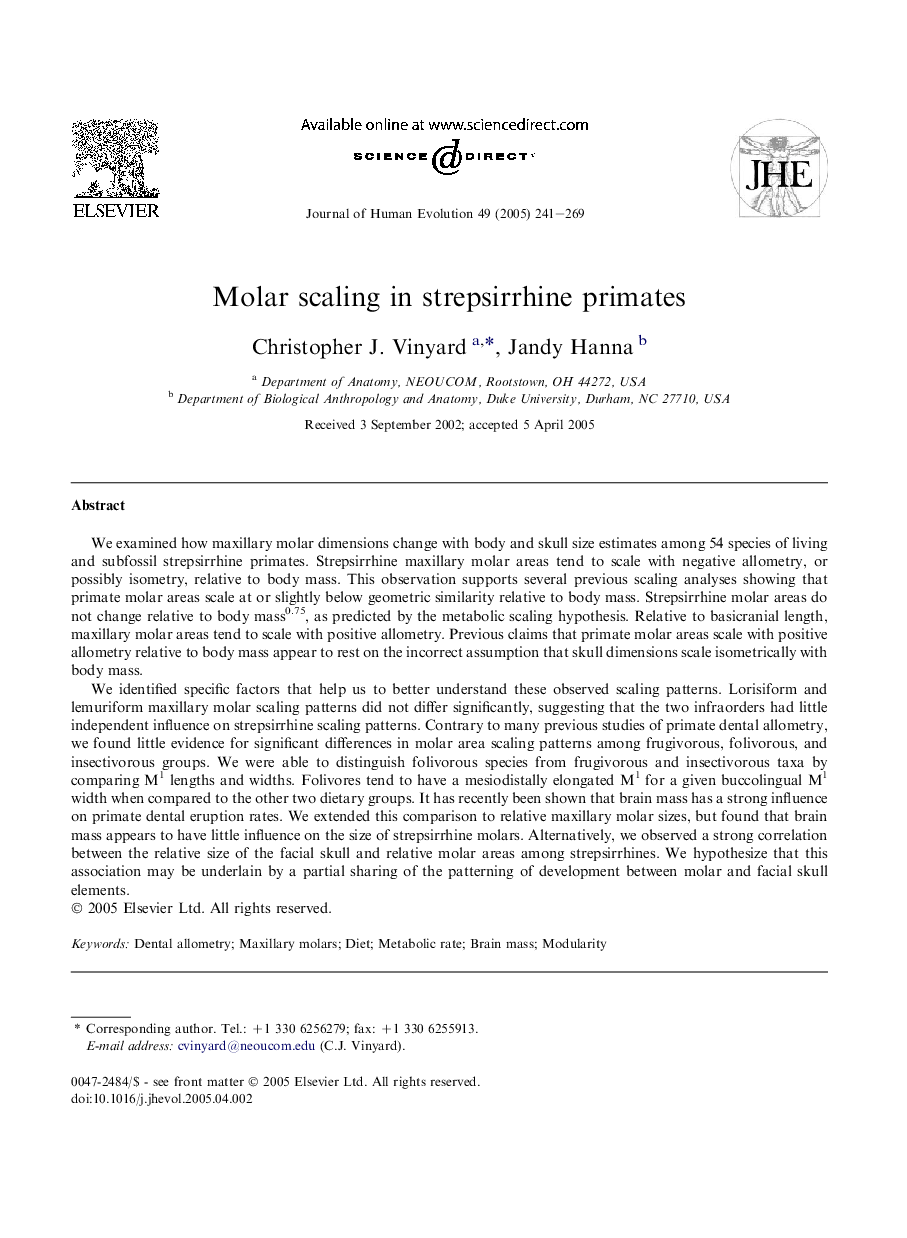| Article ID | Journal | Published Year | Pages | File Type |
|---|---|---|---|---|
| 9485964 | Journal of Human Evolution | 2005 | 29 Pages |
Abstract
We identified specific factors that help us to better understand these observed scaling patterns. Lorisiform and lemuriform maxillary molar scaling patterns did not differ significantly, suggesting that the two infraorders had little independent influence on strepsirrhine scaling patterns. Contrary to many previous studies of primate dental allometry, we found little evidence for significant differences in molar area scaling patterns among frugivorous, folivorous, and insectivorous groups. We were able to distinguish folivorous species from frugivorous and insectivorous taxa by comparing M1 lengths and widths. Folivores tend to have a mesiodistally elongated M1 for a given buccolingual M1 width when compared to the other two dietary groups. It has recently been shown that brain mass has a strong influence on primate dental eruption rates. We extended this comparison to relative maxillary molar sizes, but found that brain mass appears to have little influence on the size of strepsirrhine molars. Alternatively, we observed a strong correlation between the relative size of the facial skull and relative molar areas among strepsirrhines. We hypothesize that this association may be underlain by a partial sharing of the patterning of development between molar and facial skull elements.
Related Topics
Life Sciences
Agricultural and Biological Sciences
Ecology, Evolution, Behavior and Systematics
Authors
Christopher J. Vinyard, Jandy Hanna,
